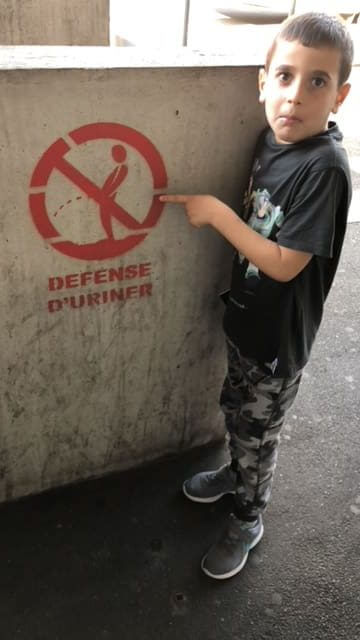
Daytime urinary frequency of childhood
I would like to start by distinguishing between this condition and other condition called overactive bladder. The latter refers to issues that arise as a result of abnormal bladder size. In this article, I will be focusing on discussing daytime urinary frequency of childhood, or in it’s proper medical term, Pollakiuria.
Daytime urinary frequency of childhood occurs in young children (usually between the ages 3 and 8 years but it is more common between ages 4 and 6 years), and it occurs a lot more frequently in boys than it does in girls. The clinical presentation is acute and sudden. Without any warning signs, the child may start wanting to urinate every 10-15 minutes. These children are completely healthy and show no signs of disease. During the night, these children don’t usually wet their beds and their need to urinate every other minute restarts in the morning light.
So, what is this condition? Is it dangerous? Could there be an underlying condition causing this phenomenon? What should we be looking out for?
What are the causes of daytime urinary frequency of childhood?
The cause is unclear. Sometimes, a viral infection (a cold, for example) can precede the symptoms, but in most cases no obvious trigger is identified. I have seen theories about emotional triggers, such as enrolment in kindergarten or the birth of a younger sibling. I don’t agree with these theories since I feel that usually the condition resolves within two to three weeks without leaving any effect on these children’s psychological state, which had hypothetically served as the initiating trigger.
What should we rule out before confirming the diagnosis of pollakiuria?
It’s important to remember that this diagnosis is one of exclusion, which means one must think of other causes that can lead to frequent urination and try to rule them out before confirming the diagnosis, be it through medical history or workup tests.
What can cause frequent urination?
Urinary tract infection – often we see parents who notice that their child has been urinating frequently and they immediately suspect a urinary tract infection. Urinary tract infections do indeed cause difficulty in holding urine and may lead to frequent urination (urgency and frequency). Remember though, urinary tract infections are not common in healthy children that have no underlying medical conditions affecting their urinary tract. Also, urinary tract infections are often accompanied by pain during urination and are less common in boys in these ages. It is true that mild urinary tract infections do not present with fever and so absence of fever does not rule out infection.
In any case, you can always run a urine test at your primary care physician’s office. Make sure to do so in a sterile manner to prevent a false diagnosis and an unnecessary course of antibiotic treatment. Since I happen to see a lot more boys that suffer from frequent urination than girls, and urinary tract infections are more common in girls, I would advise that all girls with frequent urination perform a urine test.
Type I Diabetes or Juvenile Diabetes – children with Type I Diabetes both drink and urinate frequently. In contrast to Diabetes patients, in Pollakiuria, children urinate frequently but only pass a few drops of urine at a time. Also, children presenting with Type I Diabetes for the first time are often very ill, have lost weight and have additional symptoms, as well. Again, it is easy to rule out Diabetes with the help of a simple urine test at your primary care physician’s office.
So, if you want to rule out any of the previous two conditions, all you have to do is have your child carry out a regular urine test.
Constipation – I have written a very important chapter on this website about constipation (you can find it here). Children with constipation tend to have urinary retention, sometimes pass small trickles of urine and may also have urinary incontinence. But, their clinical presentation differs greatly from that which I have described above.
How long does urinary frequency of childhood last in children?
In most cases, between two to three weeks.
Is there treatment? Can the child hold their urine at all?
There is no need to treat this condition. You can try to distract your child and by that he may be able to hold their urine for longer, but do not ever get angry with him or try out any other manipulations to get them to hold their urine. It will be over when it is over. Any attempt to force your child to hold their urine will most probably end in a fight and wet undies.
So, what are the important points about Pollakiuria in children?
If the child is healthy and is not showing any other signs of disease, rest reassured that this condition is temporary and will resolve briefly. See your doctor so he can hear about your child’s symptoms and advise you regarding the need for urine tests, other relevant workup tests and for follow-up.
Do not get angry with your child who is probably frustrated himself by the condition.
Be patient.
For comments and questions, please register
